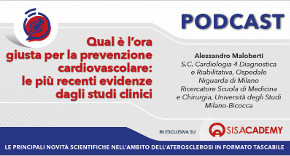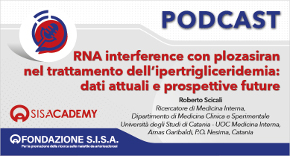 Rivista in lingua italiana
Rivista in lingua italiana
riservata ai Soci SISA
Ultimo numero:
Anno 16 • N.1/2025
SISANews
Rischi associati all’uso di statine durante la gravidanza
L'uso involontario delle statine durante la gravidanza è potenzialmente sempre più frequente: l'aumento dell'incidenza del diabete di tipo 2 in età più giovane da un lato e il crescente numero di donne che hanno figli più tardi nella vita dall'altro portano a un numero consistente di donne esposte alle statine prima del concepimento. Questo studio caso-controllo ha valutato le differenze riguardanti le interruzioni di gravidanza tra donne che assumono o meno statine durante la gravidanza. Circa il 25% di tutte le gravidanze potenzialmente esposte a una statina ha comportato l'interruzione spontanea rispetto al 21% in donne non esposte, con un aumento del rischio del 64%.
![]()
STATINS DURING PREGNANCY: A COHORT STUDY USING THE GENERAL PRACTICE RESEARCH DATABASE TO INVESTIGATE PREGNANCY LOSS
McGrogan A, Snowball J, Charlton RA
Pharmacoepidemiol Drug Saf 2017;26:843-852
PURPOSE: The aim of this study was to determine if there are any differences between the types of pregnancy loss experienced by women who have been prescribed a statin just before or early in pregnancy compared with those who have not.
METHODS: A retrospective cohort study using the General Practice Research Database was carried out. Women aged 10-49 years at pregnancy start who received a prescription for a statin in the 3 months before and/or during the first trimester of pregnancy were matched to up to 10 pregnancies on age at start date, diabetes and hypertension status before pregnancy. Pregnancies occurring between 1/1/1992 and 31/3/2009 were included. Pregnancy losses were identified and categorised as spontaneous (including miscarriage), induced for medical, other or unknown reasons. Freetext was used to determine the type of loss where this was not clear from the coded medical records.
RESULTS: Two hundred eighty-one pregnancies potentially exposed to statins were identified and matched to 2643 unexposed pregnancies. About 54.45% of pregnancies potentially exposed to a statin resulted in a delivery compared with 62.81% of those not exposed. 25.27% of all pregnancies potentially exposed to a statin resulted in a spontaneous loss compared with 20.81% in those not exposed. Using a time to event analysis with exposure as a time-dependent covariate gave an adjusted hazards ratio of 1.64 (95%CI 1.10 to 2.46) of spontaneous pregnancy loss in the statin exposed group.
CONCLUSIONS: This study is the first to report the differences in types of pregnancy loss following the potential exposure to a statin just before or early in pregnancy.
Pharmacoepidemiol Drug Saf 2017;26:843-852

Area Soci
Eventi
39° Congresso Nazionale
 39° Congresso Nazionale
39° Congresso NazionaleRoma, 23-25 novembre 2025
Save the date




 Spring Meeting Gruppi Giovani SID, SIGG, SIIA, SIMI, SIPREC, SISA
Spring Meeting Gruppi Giovani SID, SIGG, SIIA, SIMI, SIPREC, SISARimini, 6-8 aprile 2025
[continua a leggere]
 SISA LIPID ACADEMY - Corso avanzato di lipidologia clinica
SISA LIPID ACADEMY - Corso avanzato di lipidologia clinicaModena, 4-5 Luglio 2024
[continua a leggere]Giornale Italiano Arteriosclerosi
HoFH today
 Rivista Italiana della
Rivista Italiana della
Ipercolesterolemia
Familiare Omozigote
Anno 6 • N.1/2024
Rivista NMCD
Diateca
[continua a leggere]
[continua a leggere]
Newsletter
il vostro indirizzo di posta elettronica
Progetto LIPIGEN

Nuovo sito dedicato al Progetto LIPIGEN
Progetto LIPIGEN - Vecchio portale
E' necessario essere loggati come utente
Lipigen per poter accedere alla pagina
PROject Statin Intolerance SISA
PROSISA – PROject Statin Intolerance SISA
E' necessario essere loggati come utente
PROSISA per poter accedere alla pagina
GILA - Lipoprotein Aferesi
Gruppo Interdisciplinare Lipoprotein Aferesi
(Accesso Gruppo GILA-Lipoprotein Aferesi)
E' necessario essere loggati come utente del Gruppo GILA per poter accedere
Gruppo Interdisciplinare Lipoprotein Aferesi
(Documentazione ad accesso libero)
Pagina informativa per medici e pazienti










